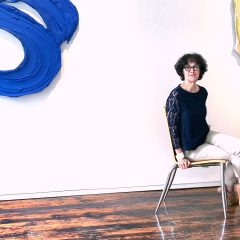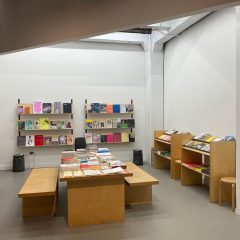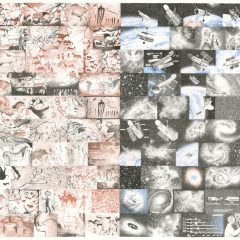[Chip explains the subject of a series by artist Mia Rosenthal: the subtle connections between our lives on Earth and the bigger, cosmic picture. — the Artblog editors]
What on earth do space, pizza, MacBooks, and evolution have in common? Well, frankly, not an awful lot. Despite their apparently arbitrary assortment, Mia Rosenthal draws together all of these elements and populates Gallery Joe with them for her solo show A Little Bit Every Day, which is as conceptually unexpected as it is painstakingly crafted. By illustrating what we know directly from our daily lives (laptops, phones, and Google searches) and pairing that with ideas we recognize mostly through indirect, memetic means (astronomy and evolution), Rosenthal confronts us with two very different faces of awareness.
Zooming out–way out
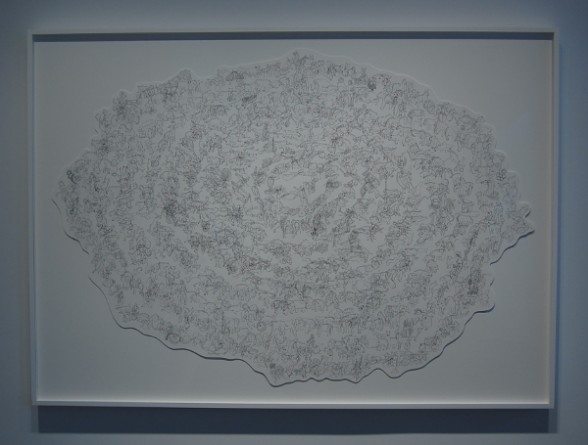
Neither direct experience nor learned knowledge is an infallible vehicle for understanding, and it takes a healthy balance of the two in order to fully fathom the universe in which we live. Making sense of grand processes, such as the birth and expansion of the cosmos or the messy, clawing struggle that results in biological diversity, requires a vastly different vantage point than the one offered by navigating the winding channels of human relationships, communication, and culture. When these facets of our comprehension overlap, however, we are able to see the big picture much more clearly.
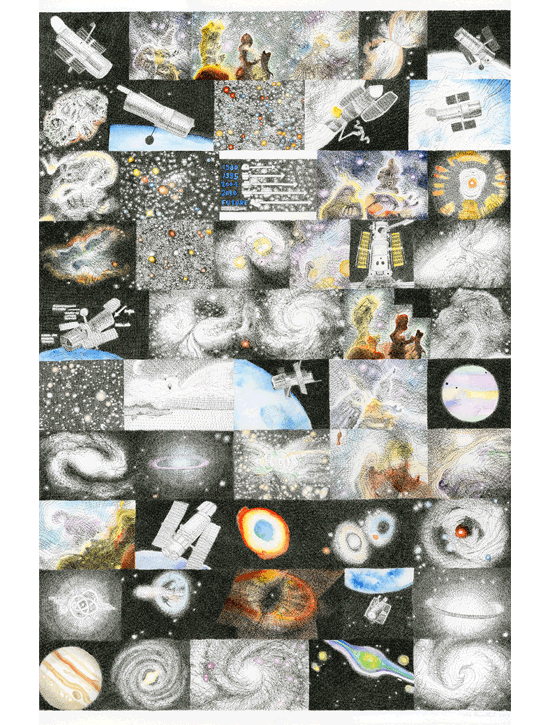
There is no doubt that evolution is one of the most complex and awesome journeys in the history of our small planet. Indeed, the very existence of our species is dependent on the chance biochemical mutations that led from primordial soup to primate. Rosenthal attempts to condense these billions of years into a spiraling homage celebrating the sojourn from microorganism to monkey. The drawings are realistic, but minimal. Scant black lines forming each creature oftentimes overlap so that the artist can squeeze even more natural history into a space practical enough to hang on a wall. Each is labeled and relatively close to its rightful place in the timeline, which manifests like rings from some fossilized tree–one that might have seen some of these species come and go during its own life.
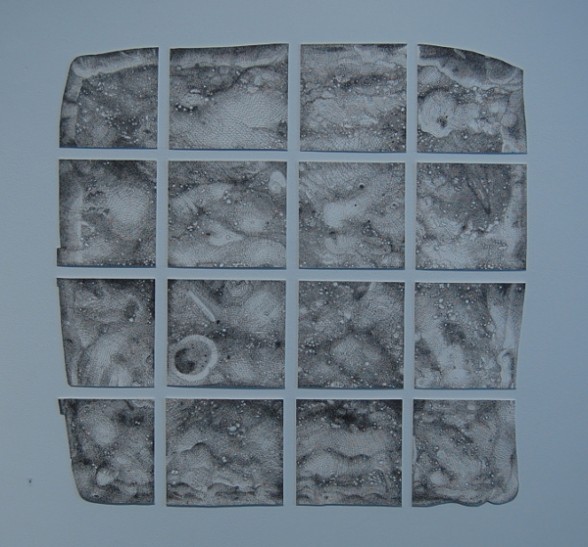
Departing a bit from our planet, Rosenthal explores images of deep space, but the ways in which she displays these vistas bring their majesty down to Earth. Delicately dotting with colored ink and graphite, the artist uses her hand to fill the white paper with nebulas and galaxies using a pointillist approach. Arranged in the familiar, organized boxes of Google Image Search, the pictures seem both cosmic and strangely predictable.
When dealing with the insanely vast distances of space and the maddening mechanics of physics, perhaps it’s best to start with a medium we know. Rosenthal takes this a step further by replicating the universe through the rectangular, cut-up slices of a local pizza shop pie, its saucy exterior mirroring globules of distant plasma.
The technological connection
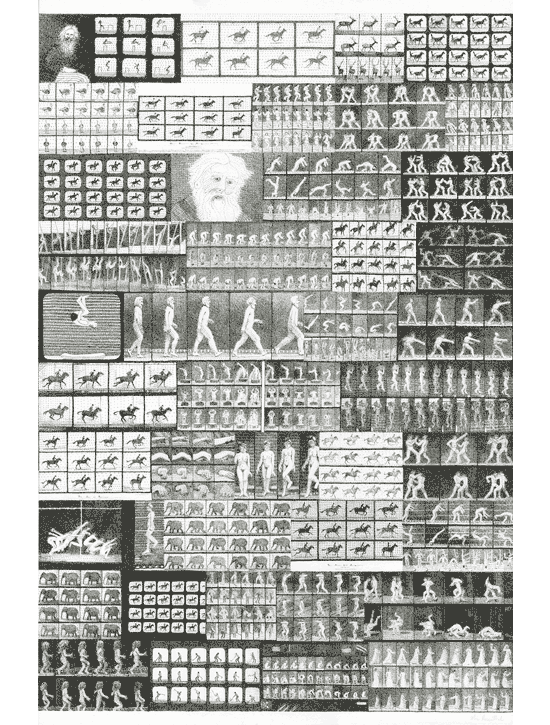
The most common images in the show, however, are curiously those of laptops, power cables, and smartphones. Why do such mundane representations appear among those of natural wonder? By invoking our sharpest tools for accessing information and communicating with one another, Rosenthal bridges the gap between paper and pixel, penning her way through the products that help us navigate the far-flung corners of knowledge and experience from the comfort of our homes. She includes further Google searches of Eadweard Muybridge’s early motion picture experiments and a desktop background of ancient cave drawings, connecting us to the beginnings of both modern technology and even the dawn of art and writing.
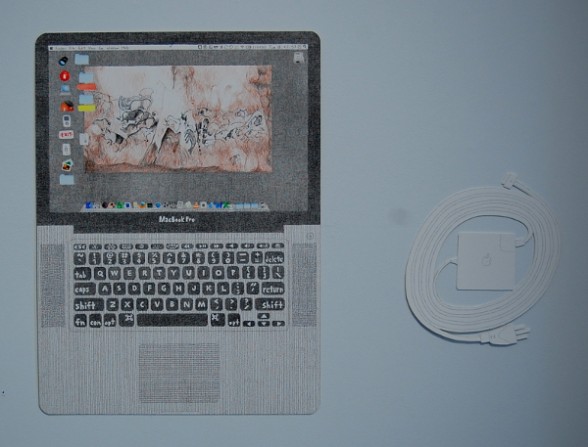
Questioned about her method for tediously marking paper with individual points, Rosenthal is often asked how long her artworks take to complete. While the span of each work varies, the artist explains that she does not really pay attention to timeframes. This is why she named the show accordingly: A Little Bit Every Day. Like the way that evolution progressed to form complex, multicellular life, or the eons that slowly forged stars and the chunk of rock on which we live, Rosenthal’s process mirrors these plodding systems on a human scale. Rosenthal encourages us to take our lives one day at a time and to never cease learning. There is never a point at which we are complete or have done everything that we can do–we are always works in progress.
A Little Bit Every Day ran from Feb. 7 – March 22, 2014, at Gallery Joe, 302 Arch St., Philadelphia, PA 19106.


